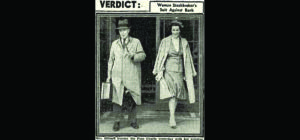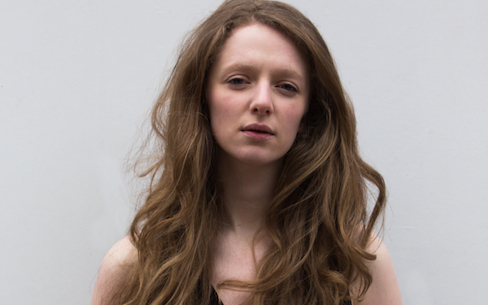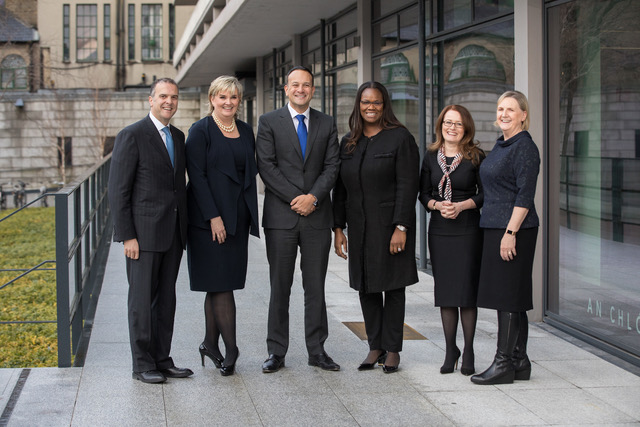In 1925, a 22-year-old Dubliner called Oonah Keogh stood on the floor of the Dublin Stock Exchange to become the world first female stockbroker.
In an age when women were removed from the public sphere, resigned to being ‘first and foremost a mother’ lest they are wrenched from ‘the bosoms of their families, from the preparation of their husbands’ dinners’, a 22-year-old Dubliner called Oonah Keogh took her position on the most meritocratic of platforms: the Dublin Stock Exchange to become the world first female stockbroker. The year was 1925. The world would have to wait another 42 years to welcome another female stockbroker.
“Styled in silk blouses, a loose bun and Ma Griffe perfume, her tall, elegantly feminine appearance contrasted with that of her male counterparts.”
Uncovering a gem
Little was known about the world’s first female stockbroker until Deirdre Somers (chief executive of the Irish Stock Exchange) unearthed her story from the basement of the business she leads. On a very rare, quiet summer’s day, Somers and her team uncovered the journal entries from the period that exposed this extraordinary Irish story that caused a ‘tremendous sensation’ in 1925.
“She railed against the idea of feminism, challenging the notions of what it means to masculine and feminine.”
Financial inclusion
Born to a conservative upper-class family in 1903, Oonah Keogh’s father, Joseph Keogh ascended from being a banker (Hibernian bank) to a stockbroker, amassing considerable wealth and prestige only to lose it all 25 years later in the wake of the Wall Street crash.
Having studied in London just before joining the Dublin Stock Exchange, Oonah developed a taste for travel spending two years in Europe and North Africa, mastering French and developing a keen interest in politics. Upon the invitation of her well-positioned father, Oonah joined Joseph Keogh & Co Stockbroking firm, at first ‘keeping the book’ and then ‘thrust into the hurly-burly of dealing and trading’ alongside financial luminaries James and Eugene Davy (antecedents of today’s Davy Stockbrokers).
Styled in silk blouses, a loose bun and Ma Griffe perfume, Oonah’s tall, elegantly feminine appearance squarely contrasted with that of her male counterparts. And yet, throughout her lifetime, she railed against the idea of feminism, challenging the notions of what it means to masculine and feminine stating ‘neither is superior to the other, and each should have equal opportunities of exercising their talents’.
Oonah Keogh’s talents would include managing ‘fantastically large sums’ of other people’s money and building the family business to a roaring trade until a family dispute and a financial depression resulted in her resignation from Joseph Keogh & Co and a subsequent court case with Hibernian Bank.
“A Catholic, she married (and subsequently divorced) a Russian émigré; she voted, smoked, and drank.”

The disruptor
Oonah Keogh lived in a time when the very idea of difference was under attack. Women were resigned and restricted to passive, supplementary roles, dominated by the clergy and a patriarchal State.
Even if Oonah’s story invariably begins with ‘Who was she?’, posthumously rescued from obscurity, her life ventured beyond the status quo. A Catholic, she married (and subsequently divorced) a Russian émigré; she voted, smoked, drank, changed her (first) name, moved countries (to Spain) and ascended into the male-dominated world of high finance.
Like an acorn, her professional output contains both the seed and the oak of pressing for progress. Without Oonah Keogh, that brave Dublin firebrand, Ireland’s financial services landscape would not have had Nora Herlihy (founder of the Irish Credit Union), Deirdre Somers (CEO of the Irish Stock Exchange) or Francesca McDonagh (group chief executive of Bank of Ireland).
Echoing the language of her industry, she once said: ‘Life takes you at your own valuation’, at no time has that been truer than today as we celebrate International Women’s Day 2018.
Article by Lesley Tully, head of Design Thinking, Bank of Ireland.





